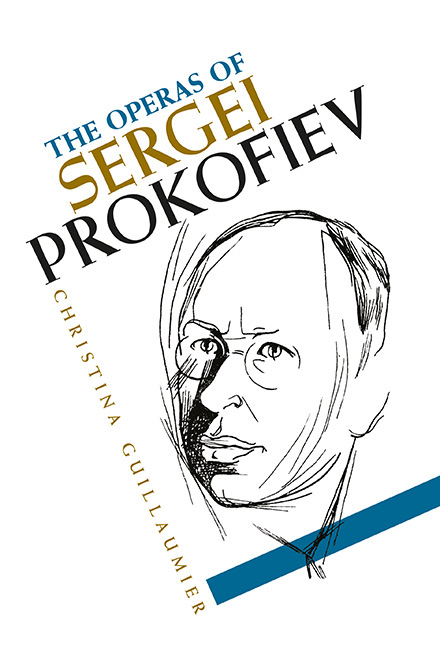Book contents
- Frontmatter
- Dedication
- Contents
- List of Illustrations
- Acknowledgements
- Note on transliteration, abbreviations and sources
- Introduction: Prokofiev and Opera
- 1 Early Operatic Experiments and Maddalena
- 2 Between Opera and Theatre: Radicalisation of Style in The Gambler
- 3 A Successful Enterprise: Love for Three Oranges
- 4 The Devil Within: Theatre and Spectacle in The Fiery Angel
- 5 Towards a Soviet Operatic Style: Semyon Kotko
- 6 Betrothal in a Monastery and the Retreat from Ideology
- 7 War and Peace: The Prokofievan Operatic Ideal?
- 8 Dramaturgical Re-evaluation in The Story of a Real Man
- Epilogue
- Synopses
- Bibliography
- Index
2 - Between Opera and Theatre: Radicalisation of Style in The Gambler
Published online by Cambridge University Press: 28 April 2020
- Frontmatter
- Dedication
- Contents
- List of Illustrations
- Acknowledgements
- Note on transliteration, abbreviations and sources
- Introduction: Prokofiev and Opera
- 1 Early Operatic Experiments and Maddalena
- 2 Between Opera and Theatre: Radicalisation of Style in The Gambler
- 3 A Successful Enterprise: Love for Three Oranges
- 4 The Devil Within: Theatre and Spectacle in The Fiery Angel
- 5 Towards a Soviet Operatic Style: Semyon Kotko
- 6 Betrothal in a Monastery and the Retreat from Ideology
- 7 War and Peace: The Prokofievan Operatic Ideal?
- 8 Dramaturgical Re-evaluation in The Story of a Real Man
- Epilogue
- Synopses
- Bibliography
- Index
Summary
The Gambler was Prokofiev's first mature operatic experiment. He explored an entirely different sound world from that of Maddalena and the radicalisation of his musical language was by this time complete. His opportunity to write The Gambler came after Alexander Siloti, the conductor of St Petersburg's distinguished Siloti concerts between 1903 and 1917, introduced him to Albert Coates, an English conductor at the Mariinsky Theatre, who reportedly told him, ‘Write your Gambler, we’ll stage it.’ The younger members of the directorate of the Mariinsky Theatre were keen to update the operatic repertory and to include works by contemporary composers: this was certainly a motivation for Coates to urge Prokofiev to write The Gambler. With such encouragement and a commission of sorts, Prokofiev swiftly and with great enthusiasm set to work on both the libretto and the music.
In less than six months the piano score was completed and then presented to the Mariinsky Theatre directorate for inclusion in the 1916–17 season. Prokofiev was offered a contract and preparations were soon underway for the first performance. The radical theatre director Vsevolod Meyerhold, who had first heard Prokofiev play through The Gambler in October 1916 at an evening hosted by Coates, was impressed by what he heard. His support for the opera was immediate and enthusiastic: he thought The Gambler was an innovative and controversial contribution to the genre of opera. Meyerhold, director of the Imperial Theatres in St Petersburg, was chosen as director, while Golovin was to create the stage sets. Their projected roles in the production were made official in February 1917 and notices to that effect appeared in the press.
During the summer of 1916, while juggling a hectic performing career, Prokofiev set to work on orchestrating the piano score. The first performance of The Gambler was set for February 1917 and rehearsals started in late January. However, almost immediately rumours emerged in the press that the production was not running smoothly. Tales of singers unhappy with their parts began to surface. Furthermore, Dostoyevsky's widow claimed that royalties were due to her for the use of the novel as a libretto and this protracted the negotiations. In the end, Prokofiev came to an amicable financial agreement with her.
- Type
- Chapter
- Information
- The Operas of Sergei Prokofiev , pp. 33 - 55Publisher: Boydell & BrewerPrint publication year: 2020



